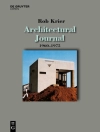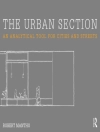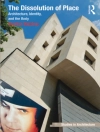This two-volume set describes a flexible and adaptive system-based methodology and associated guidelines for the management and allocation of community-based WELF resources. Over the next 50 years, rapid population, urbanization, and economic growth worldwide will create unprecedented demands for water, energy, land, and food (WELF) resources. The discussion on how to meet human needs for WELF resources and how to guarantee their respective securities has changed over time from looking at all four sectors in isolation to understanding their interdependency through the so-called WELF nexus. The approach presented in this book responds to the overall agreement in the WELF nexus literature that the management and allocation of WELF resources at the community level need to be examined in a more systemic, multidisciplinary, participatory, and practical manner while seeking to increase synergies and reduce trade-offs. This book was written to explore the value proposition of that approach. Volume 1 focuses on defining the landscape in which the nexus operates and outlines the proposed methodology. Volume 2 explores the quantitative and qualitative modeling of the nexus and landscape using system modeling tools including system dynamics. It presents a road map for the formulation, simulation, selection, and ranking of possible intervention plans. The proposed methodology is designed to serve as a guide for different groups involved in the science and policy decision aspects of the WELF nexus within the context of community development. The methodology focuses mostly on WELF-related issues in small-scale and low-income communities where securing resources is critical to their short- and long-term livelihood and development.
About the author
Dr. Amadei is a professor of civil engineering at the University of Colorado at Boulder. He is the founding director of the Mortenson Center in Engineering for Developing Communities. He is also the founding president of Engineers Without Borders–USA. Dr. Amadei is an elected member of the U.S. National Academy of Engineering and an Ashoka Fellow.












